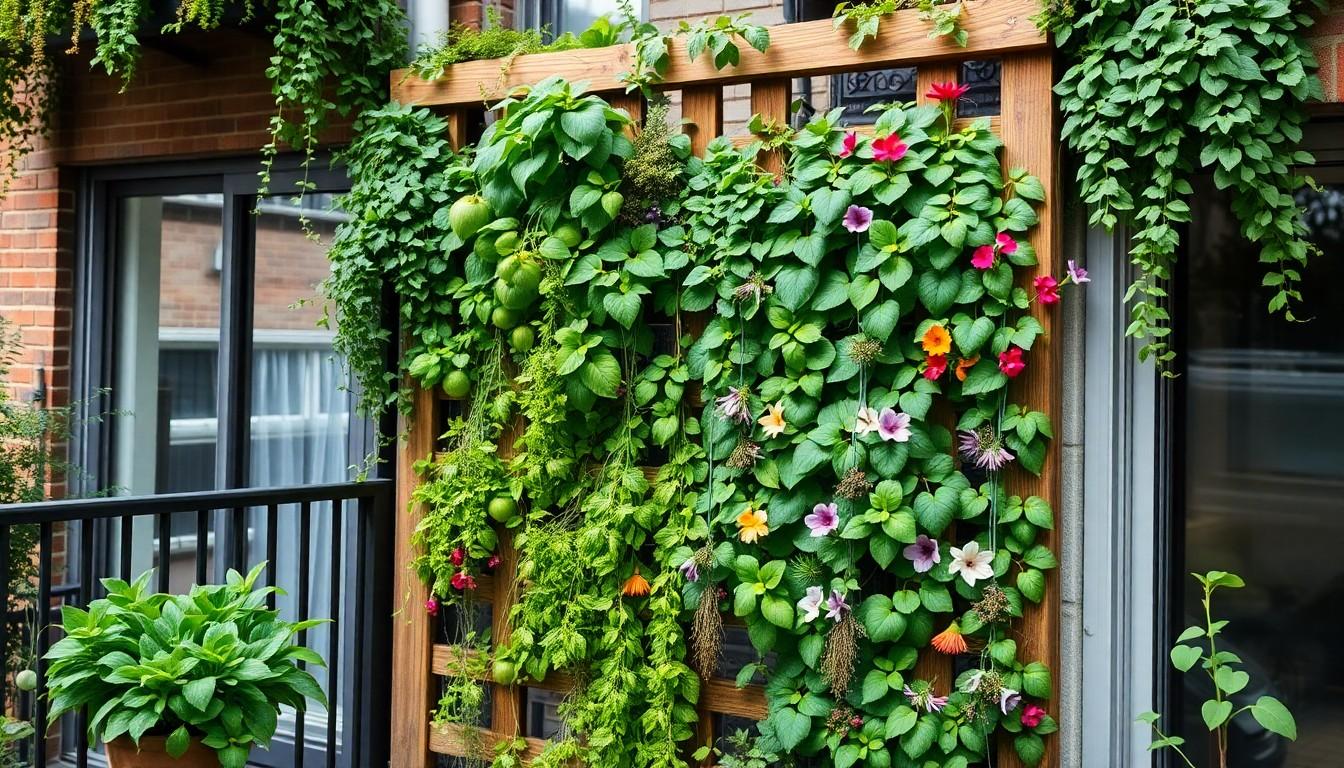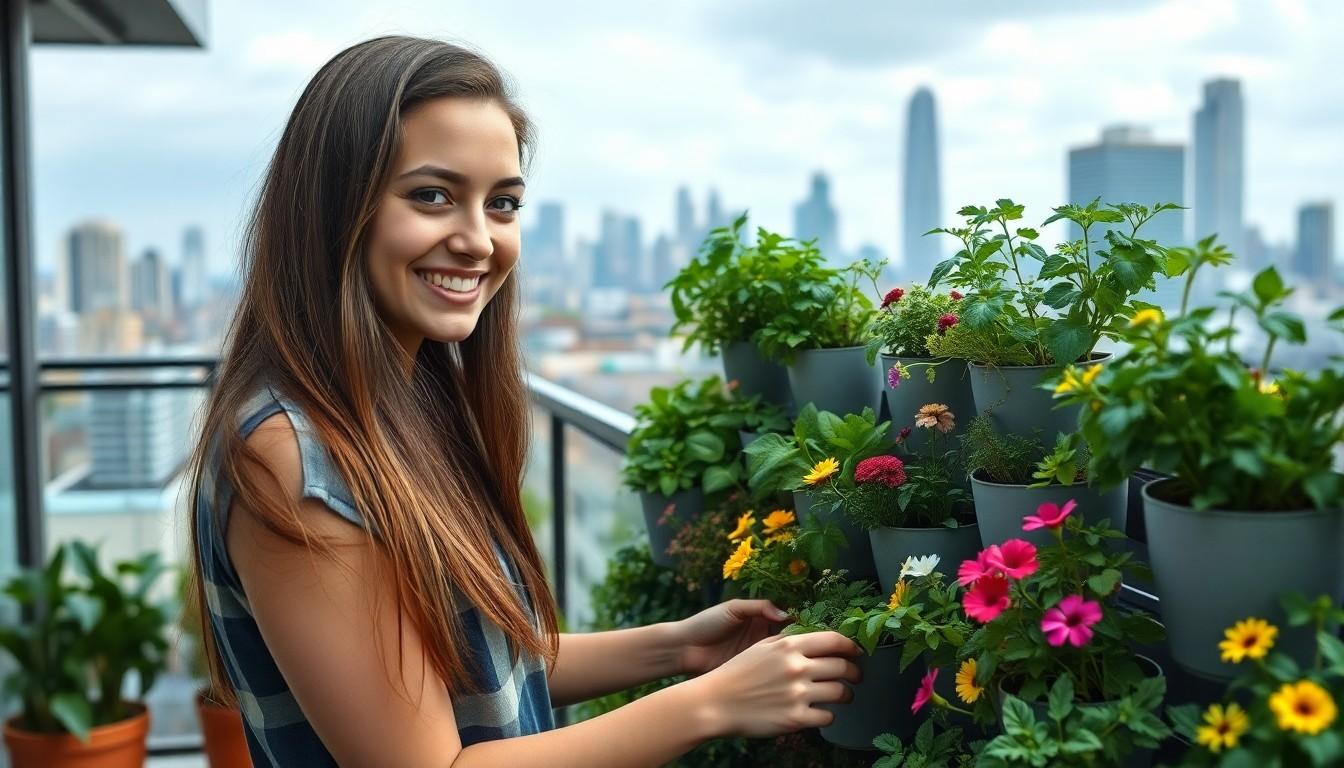In a world where urban living often limits green space, vertical gardening emerges as a game changer. This innovative approach allows individuals to cultivate plants in compact spaces by utilizing walls, fences, and other vertical structures. It’s not just about aesthetics; vertical gardens can enhance air quality, reduce noise pollution, and even lower energy costs.
As more people seek sustainable living solutions, vertical gardening offers a practical way to grow fresh herbs, vegetables, and decorative plants right at home. Whether on a balcony, patio, or even indoors, this gardening method transforms underutilized areas into lush, vibrant ecosystems. Discover how vertical gardening can elevate any space while promoting a greener lifestyle.
Overview Of Vertical Gardening
Vertical gardening refers to the practice of cultivating plants vertically on structures. This method maximizes limited space, enabling individuals to grow a variety of plants in urban settings. Implementing vertical gardening can transform walls, fences, and even small balconies into thriving green spaces.
Vertical gardens can comprise various plant types, including herbs, vegetables, and ornamental plants. Utilizing vertical frames, trellises, and modular systems enhances the aesthetic appeal while providing practical benefits. Benefits include improved air quality, reduced noise levels, and energy efficiency through natural insulation.
Vertical gardening promotes sustainable living by encouraging local food production. Homeowners can easily access fresh produce, contributing to healthier diets. Additionally, this gardening method can foster mental well-being through increased exposure to nature and outdoor activity. Urban dwellers gain practical solutions for integrating plants into their living environments, making vertical gardening an attractive choice.
Benefits Of Vertical Gardening
Vertical gardening offers numerous advantages that contribute to urban living. This gardening method optimizes space while enhancing the environment.
Space Efficiency
Space efficiency serves as a primary benefit of vertical gardening. Limited urban areas often restrict traditional gardening methods. Vertical gardens maximize available space by allowing plants to grow upward rather than outward. This technique enables individuals to cultivate a variety of plants, including herbs, vegetables, and flowers, even in small balconies or narrow walls. For instance, a single vertical garden can yield the same amount of produce as several square feet of traditional garden beds, making it an ideal solution for urban dwellers facing space constraints.
Aesthetic Appeal
Aesthetic appeal stands out among the benefits of vertical gardening. Vertical gardens transform bare walls and fences into lively green spaces, enhancing the visual charm of urban environments. By incorporating various plant species, individuals can create stunning displays that complement their living spaces. For example, cascading vines can soften hard edges, while colorful blooms add vibrancy. These gardens also promote biodiversity by attracting pollinators, which further enriches the surrounding area.
Improved Air Quality
Improved air quality significantly contributes to the advantages of vertical gardening. Plants naturally filter pollutants and release oxygen, fostering a cleaner environment. Vertical gardens can absorb carbon dioxide, dust, and other harmful particles, promoting healthier air in densely populated areas. Studies indicate that a well-planned vertical garden can improve air quality, thereby benefiting both residents and visitors. In addition, the presence of greenery can help reduce urban heat effects by providing natural insulation, lowering energy costs for buildings.
Types Of Vertical Gardening Systems
Various vertical gardening systems cater to different preferences and available space. Each method provides unique advantages, making vertical gardening accessible and appealing to urban dwellers.
Wall Planters
Wall planters consist of modular containers attached to walls. These containers can store soil and accommodate various plants, from herbs to flowers. Wall planters offer easy maintenance and diverse designs. Common types include pocket planters, which resemble fabric pouches, and wooden or metal shelves that hold multiple pots. Their flexibility allows customization based on aesthetic preferences and available sunlight.
Vertical Hydroponics
Vertical hydroponics incorporates soilless growing techniques, utilizing nutrient-rich water solutions. This method enables efficient use of vertical space, offering higher plant yields compared to traditional growing methods. Hydroponic systems, such as tower gardens, employ a stacked configuration, where plants receive proper water and nutrients through a circulation system. This sustainable approach conserves water while minimizing pests and diseases.
Trellises And Green Walls
Trellises support climbing plants, guiding vines up vertical structures. They create visually striking displays and maximize growing space. Different types of trellises, including latticework and A-frame structures, enhance garden aesthetics. Green walls, also known as living walls, consist of pre-planted panels that are often installed directly onto building exteriors or interior spaces. These systems promote biodiversity, enhance insulation, and integrate seamlessly into urban environments.
Plants Suitable For Vertical Gardening
Vertical gardening accommodates a diverse array of plants, maximizing urban space and enhancing the environment. Here are some suitable categories for vertical gardens:
Herbs
Basil thrives in warm conditions and requires moderate sunlight. Mint spreads easily, making it ideal for container gardening. Thyme offers aromatic flavor and grows well in limited soil. Parsley adapts to varying light levels and adds freshness to dishes. Chives grow quickly and require little maintenance, ideal for vertical planters.
Flowers
Petunias provide vibrant colors and flourish in sunny spots, perfect for decorative vertical spaces. Ivy geraniums cascade beautifully, adding visual interest. Nasturtiums offer edible flowers and attract pollinators. Pansies thrive in cooler climates, enriching vertical gardens with their variety. Creeping phlox creates a stunning effect by spilling over the edges of containers.
Vegetables
Lettuce grows rapidly, making it suitable for vertical gardening. Spinach prefers cooler temperatures and takes minimal space. Radishes mature quickly and can be sown in vertical planters. Cherry tomatoes benefit from trellising, yielding delicious fruits. Cucumbers require support but produce abundant harvests in small areas.
Conclusion
Vertical gardening presents an innovative solution for urban dwellers looking to cultivate green spaces in limited areas. By transforming walls and fences into vibrant gardens, individuals can enjoy both the aesthetic and practical benefits of this method. The ability to grow a variety of plants not only enhances living environments but also contributes to healthier lifestyles and improved air quality.
As urban populations continue to grow, vertical gardening will likely play a crucial role in promoting sustainability and biodiversity. Embracing this gardening technique allows anyone to create their own green oasis, fostering a deeper connection with nature while maximizing available space.
